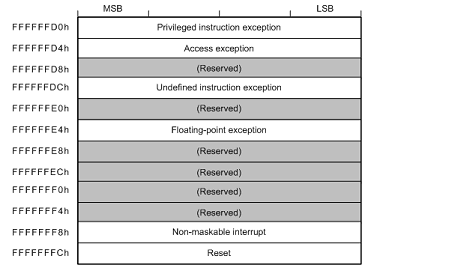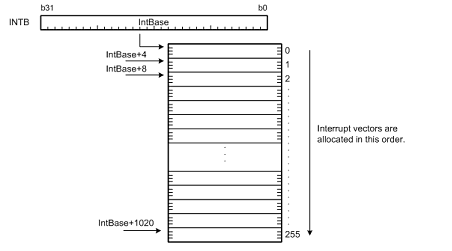There are two types of vector table: fixed and relocatable. Each vector in the vector table consists of four bytes and specifies the address where the corresponding exception handling routine starts.
The fixed vector table is allocated to a fixed address range. The individual vectors for the privileged instruction exception, access exception, undefined instruction exception, floating-point exception*, non-maskable interrupt, and reset are allocated to addresses in the range from FFFFFF80h to FFFFFFFFh. Figure 1.8 shows the fixed vector table.
* Since products of the RX200 Series do not support instructions for floating-point operations, the floating-point exception does not occur. |

The address where the relocatable vector table is placed can be adjusted. The table is a 1,024-byte region that contains all vectors for unconditional traps and interrupts and starts at the address (IntBase) specified in the interrupt table register (INTB). Figure 1.9 shows the relocatable vector table.
Each vector in the relocatable vector table has a vector number from 0 to 255. Each of the INT instructions, which act as the sources of unconditional traps, is allocated to the vector that has the same number as that of the instruction itself (from 0 to 255). The BRK instruction is allocated to the vector with number 0. Furthermore, vector numbers within the set from 0 to 255 may also be allocated to other interrupt sources on a per-product basis.
